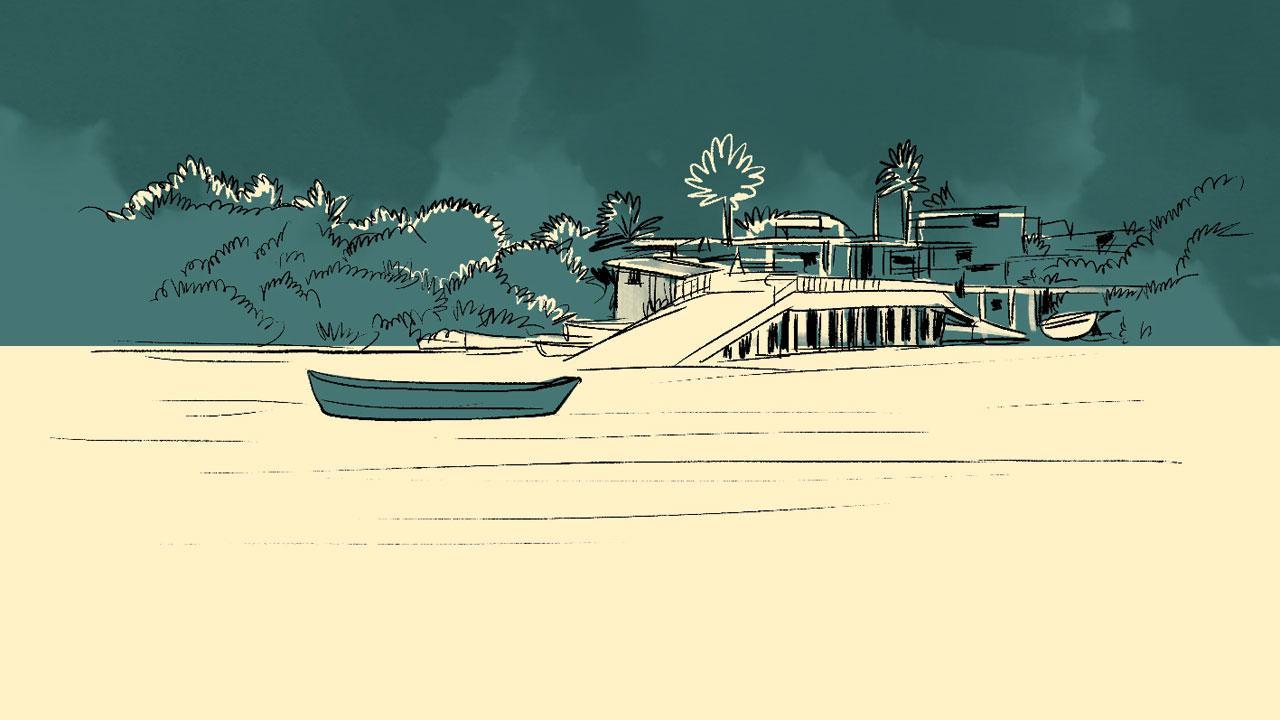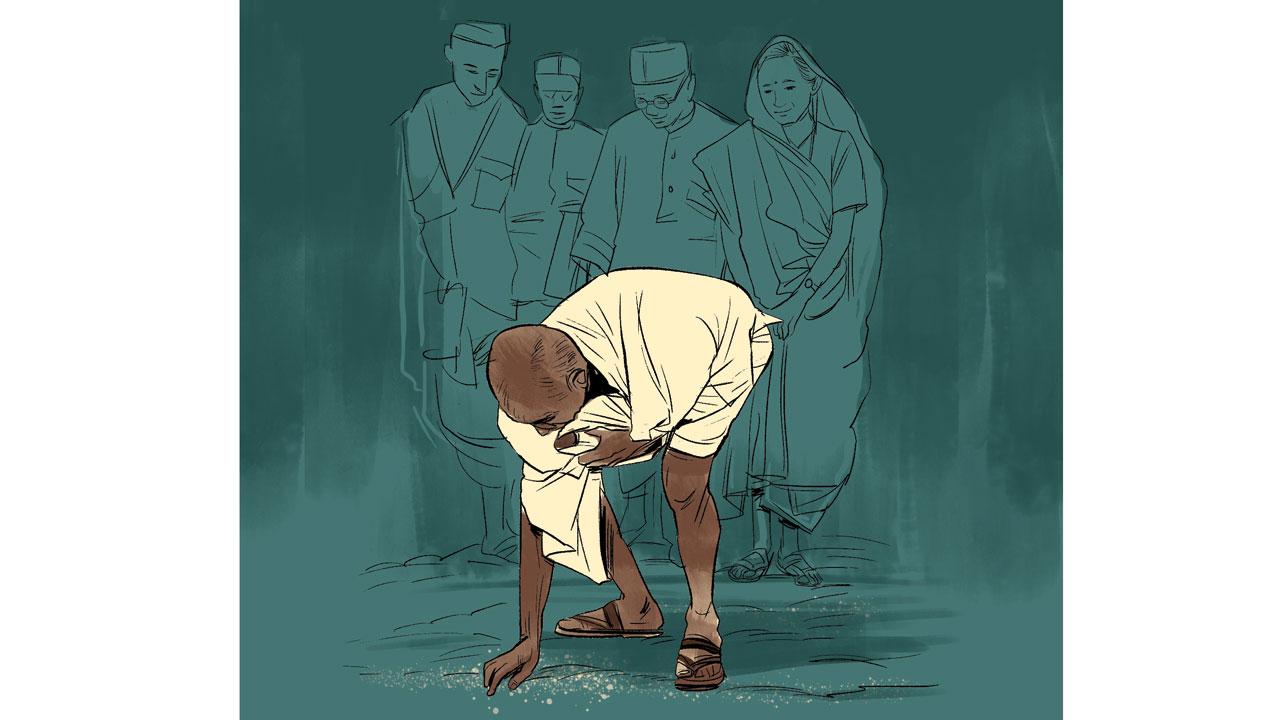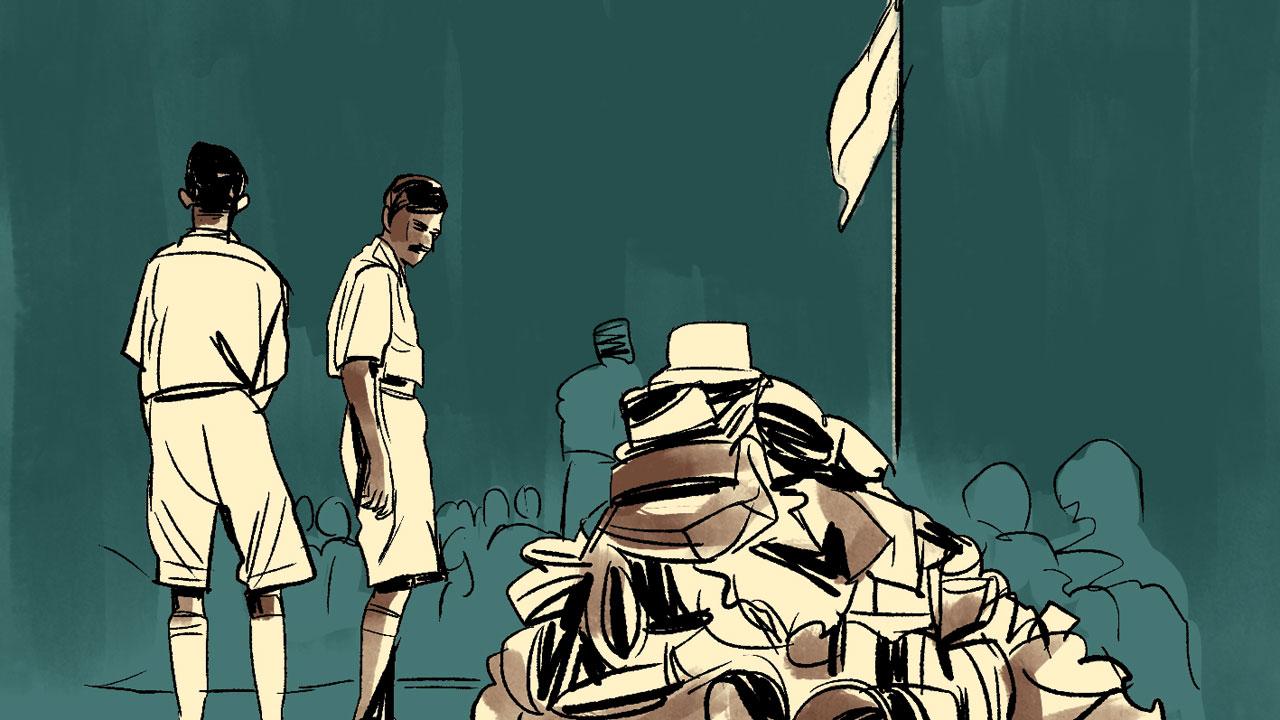Rediscover the iconic landmarks in the city (and beyond) that served as backdrop to the struggle for India’s independence

Illustration/Uday Mohite
Ramwadi Ram Mandir
Kalbadevi
The Chapekar brothers—Damodar Hari Chapekar and Vasudeo Hari Chapekar—were Indian revolutionaries who assassinated British official WC Rand and his military escort Lieutenant Ayerst in Pune on June 22, 1897. This was the first case of militant nationalism in India after the Indian Rebellion of 1857. Atrocities such as European soldiers polluting sacred places and breaking idols while searching houses in Pune during the plague had led to rising public outcry and frustration. After the assassination, the brothers returned to Bombay and sought refuge inside Ramwadi Ram Mandir, regularly participating in kirtans thereafter. They were eventually caught, and hung after a friend tipped-off the police.
Congress House
Grant Road
Within a block of buildings near Nana Chowk lies the remnants of what used to be Congress House. Standing largely as a residential site today, the compounds here were where citizens would gather to record their grievances against the British rule. Several protests were launched from here including a series of salt marches. The Congress Restaurant & Bar can still be found here today, which the British attacked several times. Further down on Laburnum Road is Mani Bhavan—Gandhi’s Mumbai residence and headquarters from 1917 to 1934.
Going underground to avoid arrest
Panju Island
Between 1923 and 1924, several freedom fighters in Bombay, Thana, Ratnagiri and Bhiwandi who were participating in the freedom struggle were about to get arrested. They travelled to Vasai, going underground at Panju Island, Arnala Fort and Shirgaon Fort. These places were difficult to access, serving as safe places to go underground.
Freedom Struggle
Narali Baug
Mahatma Gandhi visited Vasai on May 7, 1921 accompanied by his Kasturba Gandhi. They travelled by train, arriving at Vasai Station at 10.30 am. There was a gathering that he addressed at the coconut farms in Vasai to collect donations for the Tilak Fund. While he received cash from donors, several women also donated their jewellery to support the fund.
Quit India Movement
Papdy
On August 9, 1942, Bala Sawant climbed a lamp pole to hoist the Indian Flag as part of the Quit India Movement. The incident was met with huge crowds, police action and stampedes, in which Sawant lost his life. A martyrs memorial square or Hutatma Smarak was built for him in 1982 at Papdy in Vasai by the Government of Maharashtra, while a lane nearby is also named after him.
Dongri Children’s Remand Home
Dongri
Bal Gangadhar Tilak (editor of The Mahratta) and Gopal Ganesh Agarkar (editor of Kesari, which, at the time was housed at Sardar Griha near Crawford Market) were sentenced to four months in Dongri Jail for publishing what were considered to be defamatory articles that questioned the British declaring Shivaji VI (the Chhatrapati of Kolhapur) insane. Today, the building stands as a remand house for juveniles.
Naval Transport Pool
Wodehouse Road
The Naval Transport Pool at Wodehouse Road in Colaba was originally the HMIS Talwar—a signals training establishment of the Royal Indian Navy. In 1946, the Indian ratings at the establishment went on strike to protest against their general working and living conditions. The mutiny spread like wildfire across naval stations and ships, until it was finally brought under control after five days. But, by then, the damage was too stark to ignore. The British knew their Indian troops could not be relied upon. The mutiny is believed to be one of the factors that caused the British to advance India’s independence from June 1948 to August 1947.
Elphinstone College
Formerly at Gowalia Tank
One of the oldest colleges is the city—which was originally housed within a bungalow named Tankerville, along with its school—stands as a symbol for nationalism. In the 1840s, a secret society of students and graduates from the institution would meet to discuss the ill effects of the British rule. Prominent among them were journalists Bhaskar Tarkhadkar and Bhau Mahajan, and writer Ramkrishna Vishwanath.
Salt Satyagraha
Ville Parle, Mahalaxmi, Chowpatty, Wadala

When Mahatma Gandhi picked up salt at Dandi on April 6, 1930 and broke the Salt Act, it triggered similar satyagrahas across Bombay. In Vile Parle, Jamnalal Bajaj and others made salt from a saltwater pool. Advocate KF Nariman, an Indian National Congress leader at the time, led a procession from Congress House to the Mahalaxmi temple shore. Volunteers brought sea water in buckets, which were boiled on sigrees to make salt.
Bonfire of Foreign Cloth
Elphinstone Mill Compound
On July 31, 1921, the ceremony of burning foreign cloth took place in the compound of the Elphinstone Mill belonging to Umer Sobhani. The clothing was arranged in an unimposing circular pile about 20 feet high consisting mainly of old garments. Several members of the Indian National Congress attended, but there were no speeches. Gandhi merely said a few words—his message had been distributed through leaflets beforehand. He then set fire to the pile before departure. There were roughly about 10,000 to 12,000 people present with volunteers guarding the entrances.
Boycotting the visit of the Duke of Connaught
Mulji Jetha Market

In accordance with the Nagpur session of the Congress in 1920, the Bombay Native Piece Goods Merchants Association decided on February 11, 1921 to close the Mulji Jetha Cloth Market for three days—February 21, 23 and 28. Around 400 private chauffeurs and several taxi drivers suspended their businesses on those three days. The New Share Bazar (now defunct) also decided on February 19 to do the same.
Graphic and Illustration/Uday Mohite
 Subscribe today by clicking the link and stay updated with the latest news!" Click here!
Subscribe today by clicking the link and stay updated with the latest news!" Click here!










